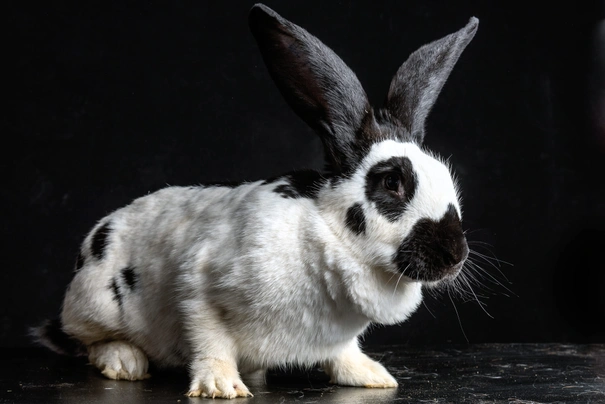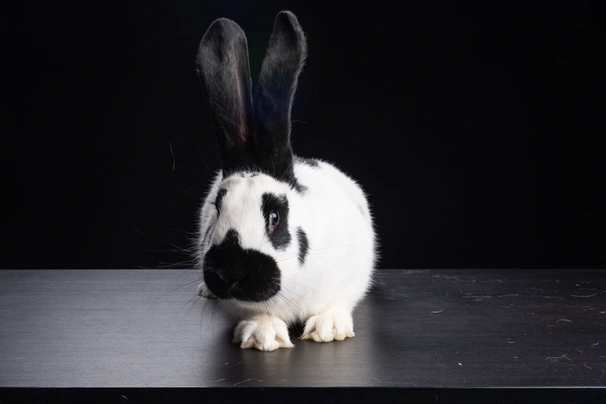Continental Giant
Introduction of the Continental Giant
The Continental is one of the largest and oldest breeds of rabbit, with evidence suggesting that the breed may stretch as far back as the mid-16th Century. They can grow to be huge – more than 15lbs in some cases and should be looked upon much like a pet dog. They aren’t keen on being picked up and so aren’t the best breed to keep if you have children who might want to carry them and have a cuddle. They will be more than happy to be petted and stroked however, and as they are such gentle, inquisitive creatures they do make fantastic pets.
History of the Continental Giant
Most Continentals are descended from the ancient Flemish Giant, a breed that originated in Ghent, Belgium. It’s thought that the Flemish Giant was created by breeding larger examples of fur and meat breeds – probably the Steenkonijn or Stone Rabbit (so called because it was said to weigh as much as an old Belgian stone – about 8.5lb) and the Patagonian, an old European breed that is now sadly extinct.
The European Patagonian was bred in France and Germany and was not related to the Argentinian Patagonian rabbit, which was a small, wild species that weighed around two pounds. Nor is the European Patagonian related to the Patagonian Hare, a separate species that is more closely related to cavy-type rodents that cannot interbreed with rabbits.
The first standards for these Continental Giants were written in 1893 and the breed shares a common heritage with many other rabbit breeds – not least the Belgian Hare, which was brought to the UK in the middle of the 19th Century. The Flemish and Continental Giants were sent to the US from Britain and Europe in the late 19th Century to improve the size of the meat animals there during the infamous ‘Rabbit Boom’.
Shortly after their arrival in America the Giant breeds began to appear at small livestock shows and quickly became popular as pets because of their docile nature. They were also useful as show, meat and fur animals.
Appearance of the Continental Giant
- Main colourways: white, black, sandy, fawn, steel grey and light grey
- Average weight: 6kg
One of the largest types of domestic rabbit, the Continental Giant is a semi-arch breed. This means that the arch of its back begins at the shoulder and stretches all the way back to the base of the tail. This gives the animal a ‘mandolin’ shape.
The body of the Continental Giant is long and very powerful and it has broad, muscular hindquarters. Male examples of the breed have a large, wide head that’s much bigger than the doe’s. Female examples have a pronounced, evenly spread dewlap. Their eyes are round and bright and the ears are long and held erect.
The fur of the Giant is thick and glossy, and is accepted in black, white, blue, grey and fawn but can come in a wide variety of colourways. Most Giants weigh around 6kg, but a rabbit weighing 10kg would not be unusual.
Temperament of the Continental Giant
As already mentioned, these rabbits are gentle, friendly and very intelligent. In fact, many people say they act more like dogs than rabbits. They are easy to train and can be encouraged to play games, use a litter tray and even come when their name is called, with relative ease.
In order for the Giant to be relaxed in human company he must be handled gently and frequently when young. If this is carried out (most reputable breeders will ensure their kits are used to human company before they leave for their new homes), then you should take delivery of a happy, playful and gentle pet. Because of their large size, they are not often happy being picked up and any reckless or irresponsible handling could result in spinal injury or worse, injury to the handler. Any rabbit that is fearful or in pain may struggle and kick out and this would almost certainly cause injuries to the person holding it.
Because of its size and strength the Giant is not perhaps an ideal pet for inexperienced owners or children. They require lots of food and produce a lot of waste so they care they need is significant. Anybody considering giving a home to a Giant rabbit should think carefully about whether or not they can meet its needs.
Health of the Continental Giant
It’s vital that any rabbit owner keeps a close eye on their pet’s teeth. Rabbit’s teeth grow continually and if they are not kept worn down by a good diet that contains plenty of roughage, then they may overgrow. Overgrown teeth can cause your pet to experience difficulty eating and may also cause injuries in the mouth that could become infected. Gnaw toys, good quality hay and plenty of fibrous green vegetables will help keep the teeth worn down, and they should also be checked regularly by the owner.
All rabbits should be vaccinated against myxomatosis and Viral Haemorrhagic Disease – both conditions which can be passed on by infected animals or bedding and utensils and both of which can prove fatal to unprotected pets.
Your rabbit should not be allowed to become overweight. Obese animals cannot groom themselves properly and may become susceptible to flystrike, where flies lay eggs in soiled areas of fur – usually around the rear end – and the emerging maggots cause injuries to the skin.
All rabbits should be wormed and treated for fleas and ticks on a regular basis.


